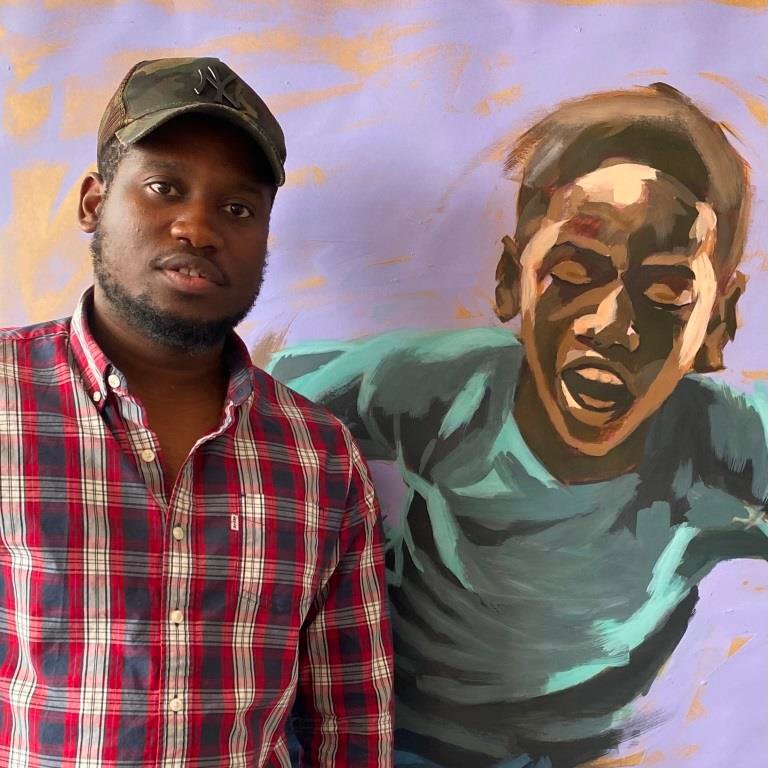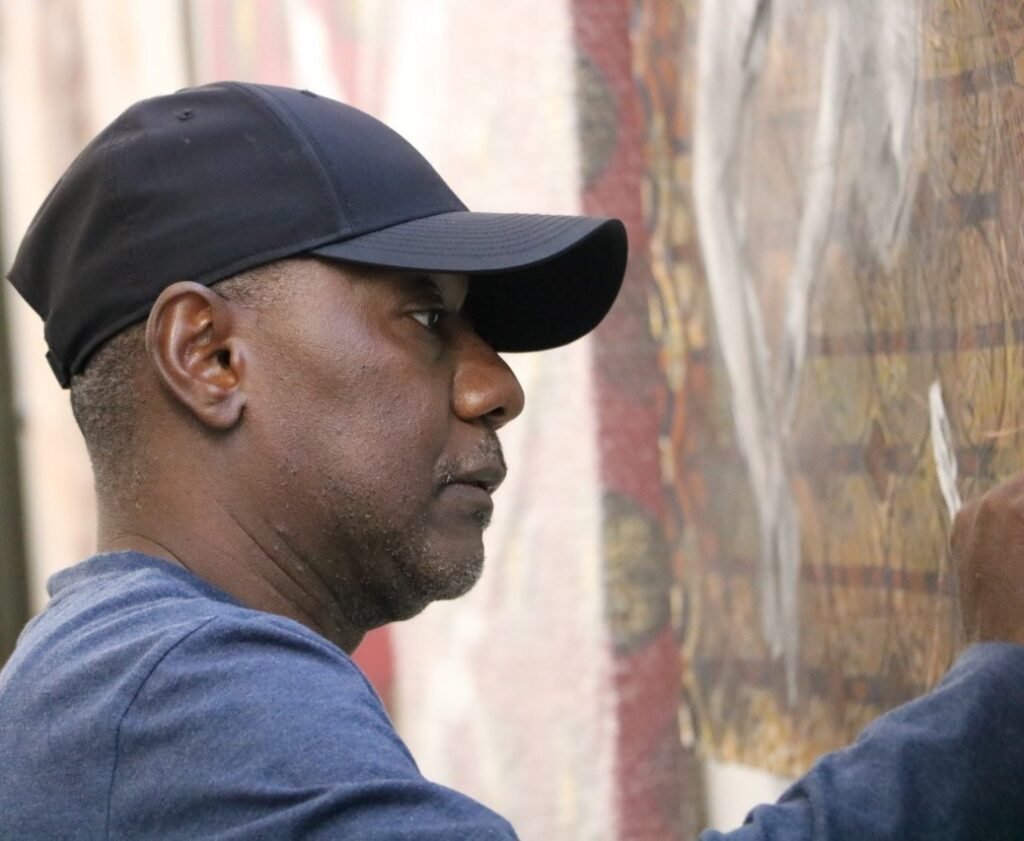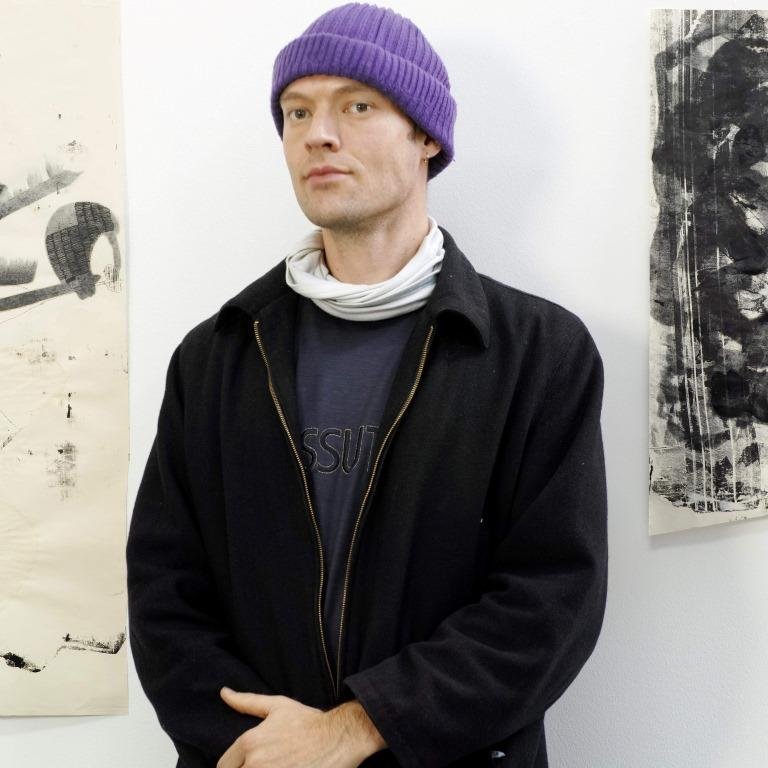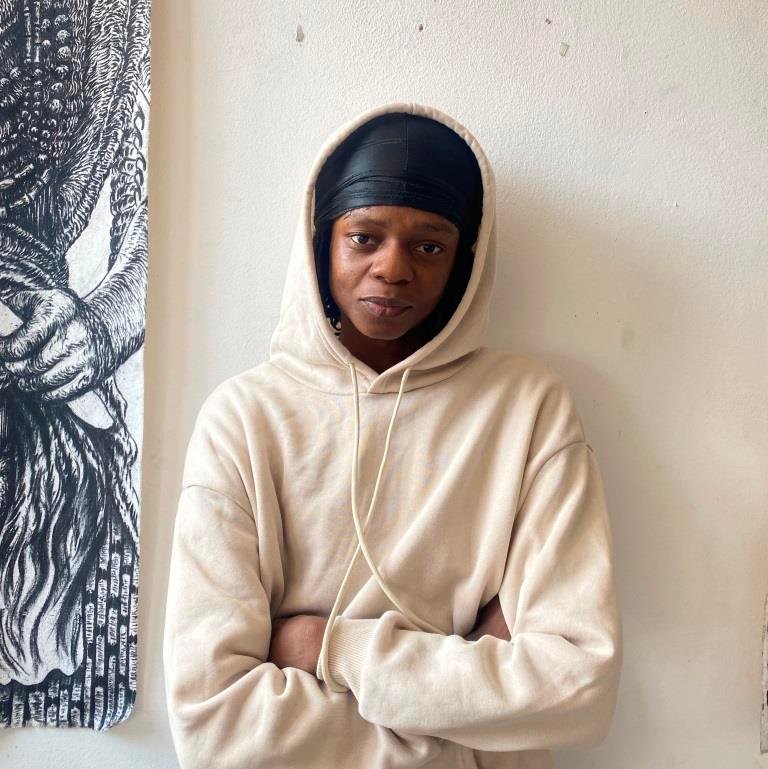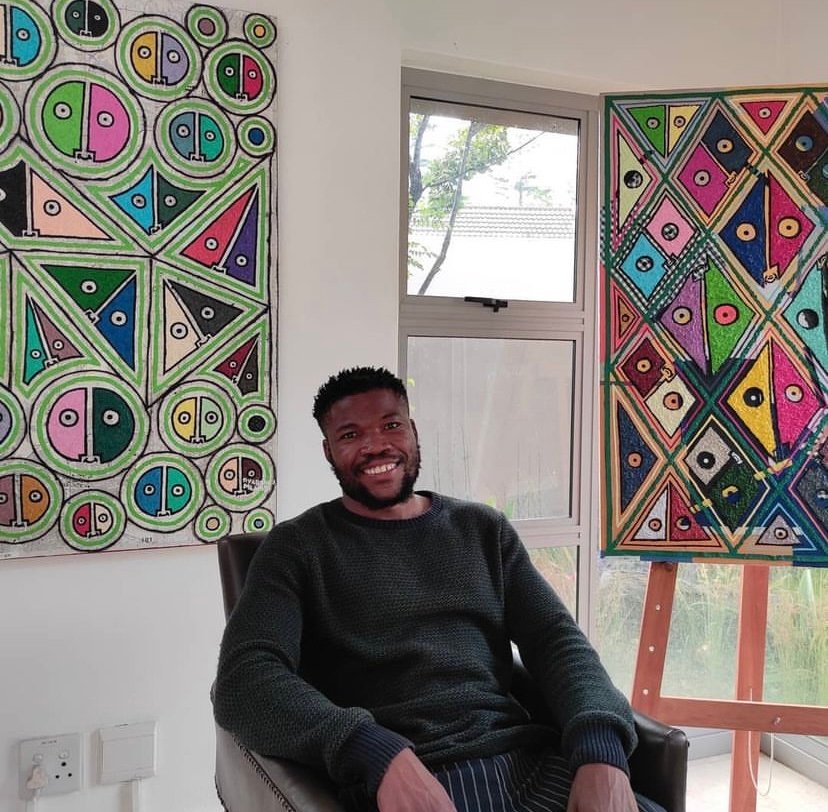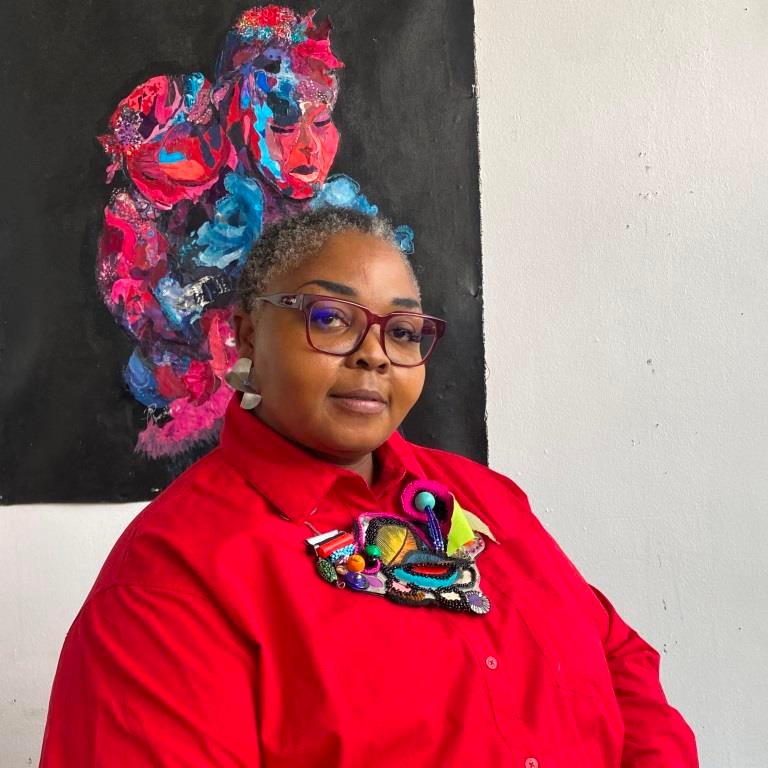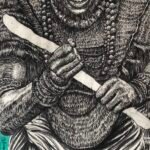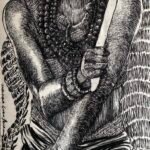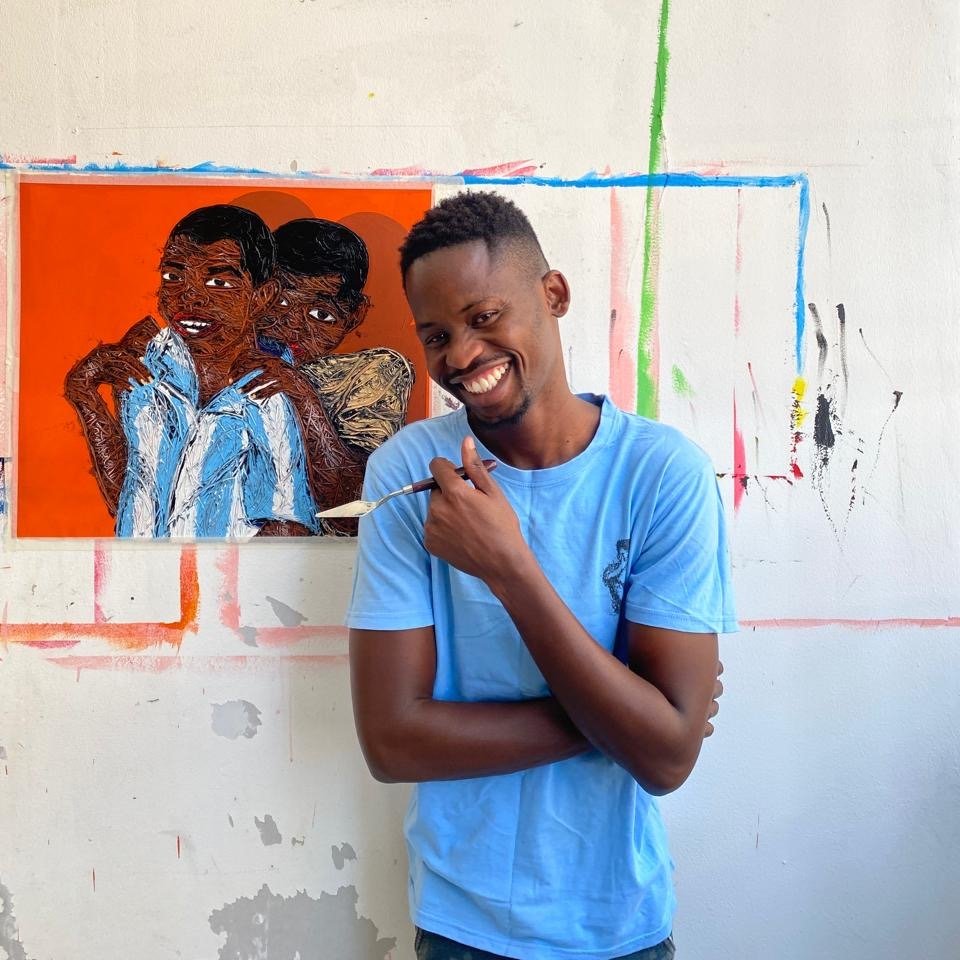
Leonard Baloyi
Introduction
Leonard Baloyi, an artist hailing from Soweto, South Africa, is a distinctive and evolving figure in contemporary visual arts. Though his formal artistic journey began only in 2012, his creative spark ignited much earlier, in his childhood, when he first encountered a book filled with drawings. His story is one of self-discovery, perseverance, and a deep commitment to exploring identity, emotion, and the human experience through his work. As an oil painter, Baloyi channels his emotions and reflections on life into his paintings, building a bridge between the material world and his innermost feelings. His approach to art is driven by a love for texture, energy, and the freedom of expression—elements that form the core of his artistic practice today.
Early Life: A Journey That Started at Ten
Leonard Baloyi’s artistic journey can be traced back to when he was just 10 years old. Growing up in the vibrant and dynamic township of Soweto, Baloyi’s early life was shaped by the rhythms of music, the depth of literature, and the spirit of his community. One formative moment in his childhood that would later define his path as an artist occurred when he found a book filled with drawings. At that time, Baloyi didn’t know that this book would become the catalyst for his artistic awakening. As a child, he playfully claimed ownership of the drawings in the book, joking to those around him that he had created the images himself. While this initial claim was made in jest, it planted a seed in his mind—a desire to draw, to create, and to explore the world of visual art.
What began as a harmless joke soon turned into a serious exploration of art. Baloyi started experimenting with drawing to express himself, and from that point on, he began to take his creativity more seriously. His early works were shaped by the boundless curiosity and imagination that accompany childhood, and he explored the possibilities of artistic expression by sketching and drawing daily. It was this dedication to practice, even at a young age, that laid the foundation for his later work as an artist. Baloyi’s passion for creating grew organically, shaped by his exploration of different techniques and mediums.
The Influences: Cy Twombly and Emotional Expression
A pivotal moment in Baloyi’s artistic development came when he discovered the work of Cy Twombly, an artist whose unique approach to mark-making and expression would profoundly influence Baloyi’s own work. Twombly, known for his large-scale, expressive scribbles, loops, and text-based art, left a lasting impression on Baloyi. The energy and raw emotion in Twombly’s marks resonated with Baloyi, who saw in Twombly’s work an unfiltered connection to the artist’s inner world—something that he, too, wanted to capture in his own practice.
Baloyi was particularly drawn to the way Twombly’s marks were not merely about form or structure but about releasing energy, emotion, and identity onto the canvas. The spontaneity, urgency, and freedom inherent in Twombly’s technique inspired Baloyi to adopt a more intuitive and expressive approach to his work. For Baloyi, Twombly’s work became a reference point for understanding how emotions, feelings, and the subconscious can be conveyed through the physicality of mark-making. Twombly’s work showed Baloyi that art didn’t always have to be about precision or perfection—it could be about the freedom to create, to make bold gestures, and to let emotions flow onto the canvas.
This influence is evident in Baloyi’s own paintings, where the marks and brushstrokes are imbued with energy, emotion, and a deep sense of self. The fluidity and organic quality of his brushwork speak to a direct and unfiltered engagement with his inner world. Like Twombly, Baloyi’s process is as much about the physicality of painting—the act of applying paint to the canvas—as it is about what the work reveals about his feelings and state of mind.
The Role of Books, Music, and Identity
Baloyi’s artistic identity has also been shaped by a diverse range of influences, particularly books and music. He grew up surrounded by literature and music, both of which provided an emotional and intellectual backdrop to his early years. While he does not single out books or musical genres as his absolute favourites, Baloyi credits the richness of his environment—full of stories, narratives, and sounds—with helping him develop a deep sense of self-awareness and a broader understanding of the world.
Books, for Baloyi, have always been a source of inspiration, allowing him to explore ideas and themes that he later translates into his work. The written word, whether through poetry, fiction, or art books, feeds his imagination and offers a space to reflect on identity, society, and the human experience. Similarly, music plays an important role in his practice, providing both emotional resonance and rhythmic energy. The connection between music and visual art is something that Baloyi feels deeply—just as music has a beat, flow, and rhythm, so does his painting. Music allows him to tap into emotional states that often find their way into his work.
At the core of his artistic exploration is the theme of identity—how one understands oneself in relation to the world. The intersections of culture, community, and personal experience are recurring motifs in Baloyi’s paintings. His work is an attempt to understand, express, and sometimes challenge the complex layers of identity that form who he is and how he perceives the world around him. The vibrancy of Soweto, the township that shaped him, is embedded in his work, and his pieces often evoke the energy and emotions that stem from living in a place that is simultaneously challenging and inspiring.
The Oil Paint Medium: Flexibility and Time to “Dig In”
Baloyi’s preferred medium is oil paint, and he is particularly drawn to the medium’s ability to allow him to work slowly and thoughtfully. Oil paint provides him with the time and flexibility to “dig in” to the emotional depth of his ideas. Unlike other mediums that dry quickly, oil paint gives him the opportunity to layer, manipulate, and rework the painting over a longer period. This is crucial for Baloyi, who believes that the emotional and conceptual complexity of his work requires time to develop fully.
The texture of the oil paint is another aspect that appeals to him. The rich, tactile quality of the medium allows Baloyi to experiment with different surface textures, from thick impasto applications to more delicate, smooth layers. This variation in texture adds depth and dimension to his work, both visually and emotionally. Baloyi’s paintings are characterized by a rawness and a physicality that reflect his need to engage with his emotions and thoughts directly through the act of painting.
The act of painting itself is a journey for Baloyi. His use of oil paints is not simply a technical choice—it is an extension of his approach to creating. The slow, meditative process of painting with oils gives him the freedom to explore and rework his ideas, and this aligns with his broader goal of using art to reflect the ever-evolving nature of human experience. The richness and intensity of the paint allow him to express the layers of emotion and identity that form the core of his work.
The Future: Excitement and Engagement
Looking to the future, Leonard Baloyi is excited about the possibilities that lie ahead for his artistic career. He envisions greater engagement with audiences and the opportunity to exhibit his work in more spaces, both locally and internationally. Baloyi’s ambition is not only to show his work in galleries but also to create spaces where art can be experienced in a more interactive and dynamic way. He wants to engage with people through his art, using his paintings as a platform for dialogue and reflection.
For Baloyi, the future holds the promise of pushing boundaries and expanding his creative expression. He sees himself as an artist who will not be confined by traditional norms or expectations, but one who seeks to challenge and redefine the limits of his work. His journey is one of constant growth, and he is eager to continue evolving as an artist. Baloyi views his practice as a lifelong pursuit, one that will always be marked by experimentation, exploration, and an unwavering commitment to emotional and conceptual depth.
Conclusion
Leonard Baloyi’s art is a powerful expression of identity, emotion, and the human condition. From his early days in Soweto to his current practice as a professional oil painter, Baloyi’s journey has been one of constant discovery, influenced by his love for books, music, and the emotional resonance of his surroundings. His paintings, imbued with energy, texture, and a raw immediacy, speak to the complexity of being human—of grappling with identity, emotion, and the constant push and pull of self-expression.
Baloyi’s future as an artist is bright, filled with possibilities for deeper engagement with his audience and an ever-expanding exploration of creative boundaries. His commitment to his craft, his embrace of oil painting as a medium for emotional exploration, and his dedication to the themes of identity and feeling make him a unique voice in the contemporary art scene. As he continues to evolve and push his boundaries, Leonard Baloyi is sure to leave an indelible mark on the art world.
On Auction
-
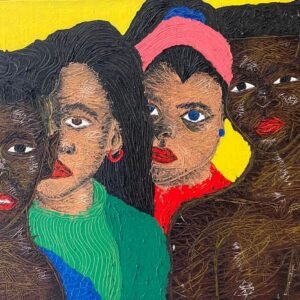 The enigmatic gazeAuction Expired
The enigmatic gazeAuction Expired -
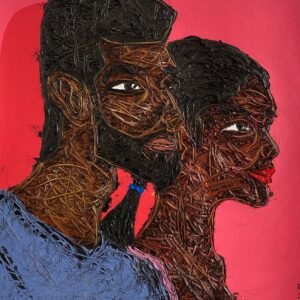 Beyond the gaze IIAuction Expired
Beyond the gaze IIAuction Expired -
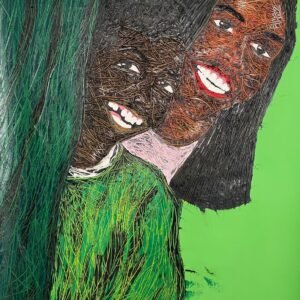 Peeking HappinessAuction Expired
Peeking HappinessAuction Expired -
 Reflections of togethernessAuction Expired
Reflections of togethernessAuction Expired

